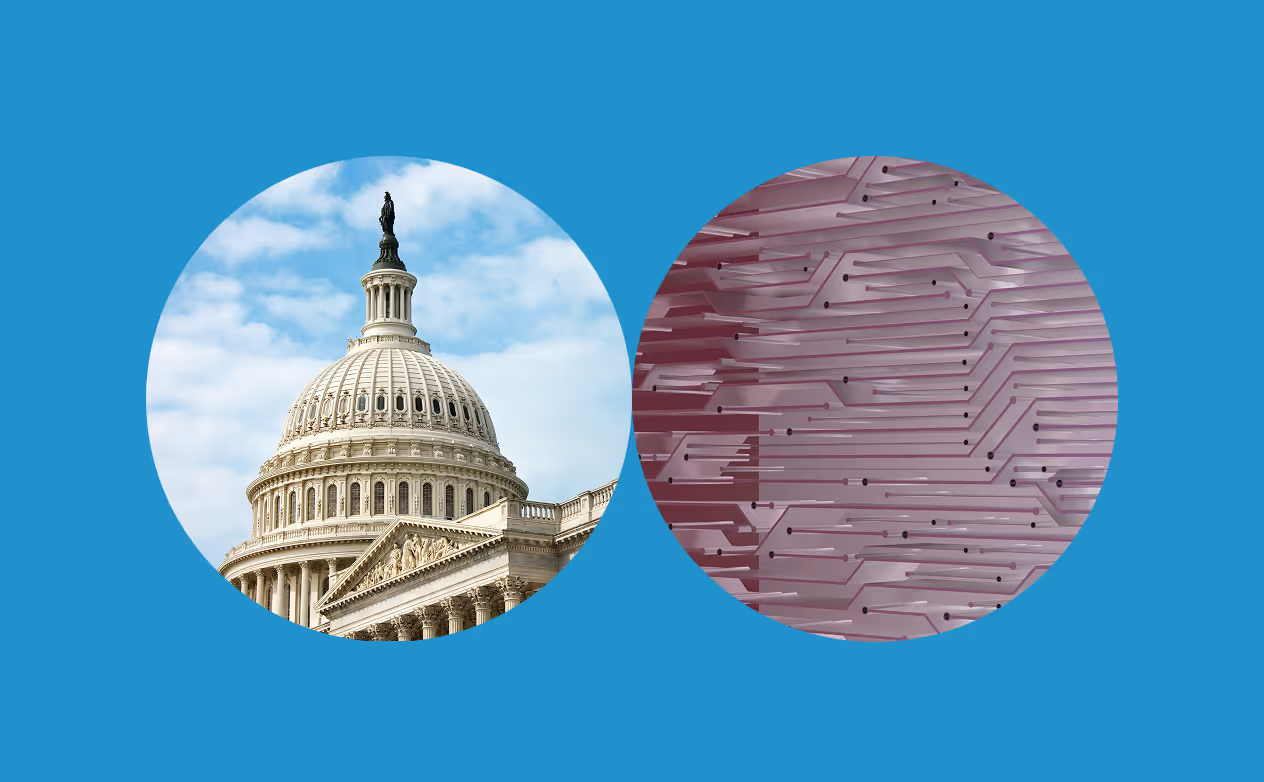Original Intelligence, not artificial, is the value Washington risks discarding.
A new contest is unfolding in Washington, not between parties or policies, but between the two forces shaping the future of work: Artificial Intelligence and Original Intelligence.
AI is not the enemy. It’s a tool. But tools are only useful if we know how to wield them. We must acknowledge that AI’s biggest strength—the efficient delivery of a universality of information—is also its biggest weakness. As AI catalogues and delivers information, it homogenizes it, creating a bias towards groupthink. Even worse, the LLMs that are the drivers of AI transformation are demonstrably narcissistic, preferring AI-derived content in their training.
Applying Original Intelligence, a person’s ability to imagine and describe something that hasn’t existed before, is what turns AI implementation from a quest for efficiency into a source of lasting competitive advantage.
The federal government is a prime example of the importance of measuring Original Intelligence when engaging in AI transformation. Recent reports indicate that over 130,000 federal workers have been pushed out, leading to a significant loss of institutional knowledge. As one U.S. official told The Washington Post in February, “the end goal is replacing the human workforce with machines. Everything that can be machine-automated will be. And the technocrats will replace the bureaucrats.”
This is AI adoption by fiat. It’s a tectonic shift in how Washington thinks about its people, and it’s likely to become a template for AI implementation far beyond government.
But what happens when the only value being measured is efficiency? The General Services Administration recently ordered a sweeping review of agreements with 19 major firms, causing these firms to justify their work, price and value. Without a way to quantify the originality of their contributions, many struggled to prove their worth beyond cost and delivery time.
That gap doesn’t just threaten contracts. It threatens the government’s ability to deliver services that require creativity and human judgment. These traits don’t appear in productivity dashboards, but are essential to meaningful public work.
Frankly, we all can see the positive effects of Original Intelligence in for-profit activities. Consider the legal industry—one that connects both the private and public sector. In the private sector we can see Original Intelligence easily. All attorneys work from the same statutes and case law, but the best command a premium because of how they interpret, argue, and find unconventional paths. In the private sector these highly talented original thinkers provide economic value that clients easily measure.
The same thing occurs in all other knowledge work, as well as more broadly in services and products. All of us consume products and services that provide us with the best value for our money. And value is never just efficiency, there is always at least some aspect of originality. The private sector allows us to see the effects of Original Intelligence retrospectively through “profit.” Efficiency plus Original Intelligence creates competitive advantage.
Understanding where government workers add value requires a different metric. There’s no marketplace like there is for business to allow us to see the benefits of Original Intelligence in government. But the
people are there—artists, engineers, lawyers, accountants, dietitians—who understand the context of the programs they run and the communities they serve. They use their Original Intelligence to excel. We just haven’t had an easy way to see it.
If we are serious about AI transformation of the government, we must measure whether government workers are adding value. Like business, where efficiency and human value add define success, government should have a similar approach. Government efficiency must be tied to human value add. If we are serious about running the government “like a business” then we should evaluate it like one, where efficiency and Original Intelligence are both valued.
The good news is that tools are emerging that allow for Original Intelligence to be measured prospectively. This will have revolutionary implications for how business is run, because competitive advantage can be found before going to market. And it can also revolutionize how we approach government services by providing for the first time a way to measure the value add of government workers and contractors. Original Intelligence should be part of how we evaluate contractors, hire government workers and design public services.
If we get this right, the government can set a powerful example in how to protect the human advantage. If we get it wrong, we risk designing poor systems that remove people from the loop entirely.
The new paradigm is already taking shape. AI plus Original Intelligence will equal lasting advantage, no matter the sector. Could Washington lead a shift that uses both to strengthen public institutions?
We’re about to find out.
Jonathan Aberman is an entrepreneur, investor, and innovation strategist who is redefining how we measure human potential in an AI-driven world. As co-founder of Hupside, a new platform defining how we measure human originality in the AI age, Jonathan is championing a new category, Original Intelligence, that identifies and quantifies originality as a key business differentiator. With a background spanning venture capital, tech commercialization, and academia, Jonathan brings a unique perspective on emerging technologies and their economic and social impact. He is a trusted voice for leaders navigating AI transformation who want to center, not sideline, human intelligence.


